|
welcome to the Town Common learnscape
common interest: what's on at the Town
Common
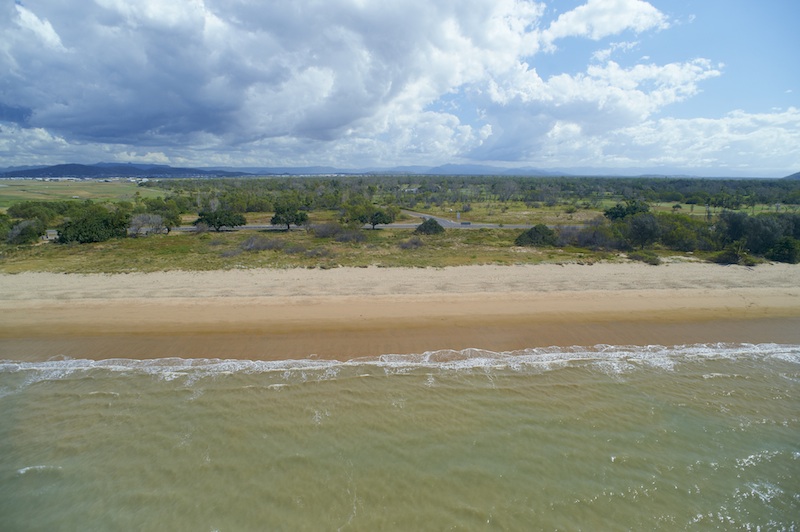
|
Brolga
Dreaming: A vision for the future of the Townsville Town Common (A
concept plan and pre-feasibility study for a North Australian
environmental and heritage theme park, Townsville Town Common),
Prepared by Dr R. Alistair Birtles and Trevor H. B. Sofield (Department
of Tourism, James Cook University of North Queensland, Townsville)
November 1992.
The
central concept of Brolga Dreaming was the creation of “an integrated
environmental and heritage theme park unique to north Australia
designed to:
• protect and conserve the natural and cultural values of the Town Common;
• rehabilitate its wetlands and other habitats;
• present its values to a much expanded audience of local residents and tourists; and
• ensure that its values are maintained to be transmitted to future generations.
The main features proposed in Brolga Dreaming were:
•
An entrance at Pallarenda linking the Pallarenda Environmental Park
(now part of the Town Common Conservation Park), Rowes Bay foreshore
and Town Common;
• An Interpretive Centre located near Teegara Rock and overlooking the Freshwater Lagoon;
•
Recreational opportunities at Little Snaggy Creek/Bohle River including
guided river cruises and a mangrove boardwalk;
•
An Aboriginal Cultural Heritage Centre including an open air
amphitheatre for performances (near the Interpretive Centre);
•
An enlarged network of trails highlighting all the main habitats and
linking look-outs, bird hides, Aboriginal sites and plant trails;
• An environmental education centre (near the Interpretive Centre);
• A tropical coastal research centre
• Guided bus tours.
Regional
Tourism Development Concept Plan for Townsville and Environs (Kinhill
Cameron MacNamara 1991) and Marketshare strategy – Marketing Plan for
the Townsville Region (Townsville Enterprise Inc. 1991) both supported
the idea of the Town Common (and Pallarenda Environmental Park)
increasing its ‘visibility’ and promoting its wildlife and heritage
values, nature based attractions and ‘Australianess’.
Hazards
to Aircraft at Townsville Airport (Civil Aviation Authority 1990)
identified the borrow pits as an unwelcome contribution to bird strike.
Friends of the Town Common proposed.
Survey
of community attitude by JCU ranked the Town Common first for
protection and development (p.77). Community and corporate involvement
in management of the Town Common is proposed (pp.77-8).
User pays option proposed to raise revenue for management and maintenance of facilities (pp.79-81).
Chapter 14 Facilities, Additional Recreational Opportunities and Activities (pp.82-100)
Borrow pits permanent water and importance (p.86).
Chapter 15 Project Office, Management and Staff Structures (pp.101-104)
Chapter 16 Marketing (pp.105-106)
Chapter 17 Feasibility (pp.107-116)
Bibliography (pp.117-120)
Appendix 1 Methodology Research Surveys (pp121-122)
Appendix 2 Interpretive Centre Spatial Dimensions (pp123-124)
Appendix 3 Park Management R and D Requirements (pp125-127)
Appendix 4 Visitor Information
Appendix 6 Capital Works Program Estimates (pp130-135)
|
|
|
|
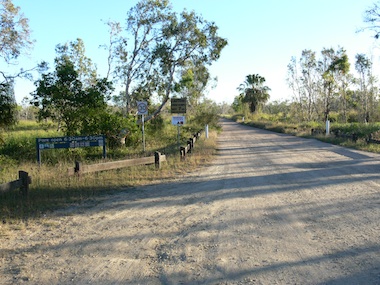
|
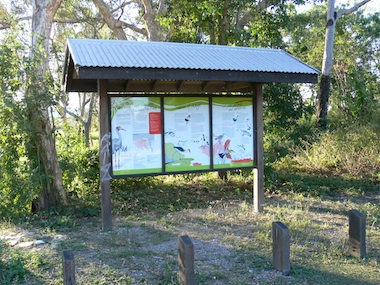 |
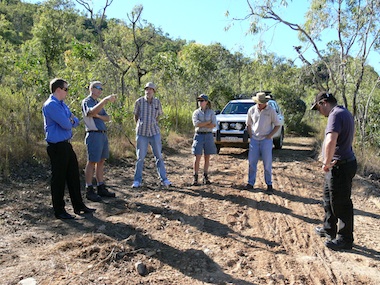
|
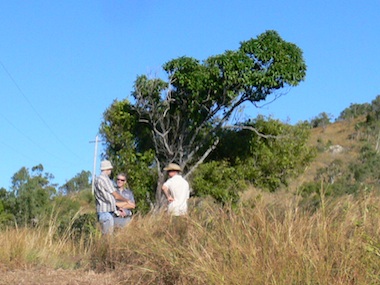 |
|
CSL Workshop
Conservation Volunteers Australia (CVA) and Townsville
City Council (Creek to Coral program) hosted and facilitated a Collective Social Learning Workshop (CSL) on the 9th of May
2011 with financial support from BHP Cannington.
The CSL workshop was
designed to stimulate thought about and record participant’s thoughts,
which could then be combined to create “A Community Vision for the
Greater Townsville Town Common”.
The focus question of the workshop was “What could the Common be and
how do we get there in terms of health, usage, profile and funding?”
A
broad cross section of community group members and other stakeholders
attended this catalytic workshop.
One of the outcomes was to increase opportunities for nature based
recreation including the creation of a ‘natureway’ connecting the Town
Common to the Townsville CBD and the expanding urban areas.
The overwhelming outcome of the workshop was that the Common is
cherished by those local people who know it, but that it is very much
under utilised by the broader Townsville community and visitors. There
was a whole range of actions proposed which would lift the profile of
the Common and make it a more accessible and enjoyable destination.
- Provide more and better opportunities for active recreation e.g. mountain-biking, trail running, outdoor exercise classes
- Provide all weather access by upgrading and sealing the main park
access road, including a new entry point at Pallarenda; benefiting both
locals, self drive tourists and organised tours especially for
commercial operators to offer quality eco-tours for visiting cruise
ships
- Upgrade and improve interpretive facilities and signage
Improve facilities for passive recreation e.g. upgrade and better maintain walking tracks, bird viewing areas
- Improve the aesthetics of the park by increasing commitment to weed management
Secure ongoing commitment to the long running Friends of Parks style
program managed by Conservation Volunteers Australia to facilitate the
involvement of community volunteers in habitat restoration work
- Develop and implement new community engagement programs e.g. a
Volunteer Interpreter Program and Green Gym
An action item from the workshop was the formation of a working group
to promote the protection and management of the greater Town Common for
recreational and conservation purposes.
|
|
|
|
|
Community Involvement
Members of Townsville’s community have been enjoying the benefits of
Town Common in one form or another since its gazettal in 1869. While
the initial use of the Town Common was predominantly resource based
e.g. grazing, quarrying, hunting and timber, current community
activities associated with the Town Common are predominantly recreation
based.
*Town Common Natural History Association – has been conducting free
guided tours of the town Common on the first Sunday of the month for
several years (1992).
*Society for Growing Australian Plants – energetic in assisting Town
Common management with revegetation works with 10,000 seedlings planted
out.
*Royal Australian Ornithological Union - has been conducting a monthly
census of four sites on the Town Common since 1990 as part of the
Australian Bird Count.
*Townsville Branch of Bird Observers Club of Australia is now active in the area. [now BirdLife Australia]
In the late 1960s the Common was a reserve in the trusteeship of the
City Council but largely unprotected and much abused. Threats ranged
from rubbish dumping, off-roading and cattle-grazing to wildfire, weed
and pest invasion and expansion of the nearby airport.
Recognising its importance as a rich and diverse wildlife habitat, and
aware of its value for environmental education and nature-based
recreation, the newly-formed Townsville Branch of the Wildlife
Preservation Society resolved to clean it up, see it properly protected
and ensure its good management. Town Common rubbish clean-ups,
fund-raising for a water pump trailer to assist fire control and a
small dam construction to retain water for wildlife were among the
Branch’s earliest activities. Frequent excursions to the Common
promoted its values to the public, increased the collective knowledge
of its flora and fauna and monitored conditions and threats.
Photographic displays and Branch-organised school excursions encouraged
further public interest.
From 1974 the Branch called for the Town Common’s declaration as an
environmental park and has consistently taken its concerns about
problems, or made recommendations for management, to those bodies
responsible. The Common was finally declared an Environmental Park in
1981, jointly managed by the City Council and QNPWS.
While the Branch became less directly involved in more recent decades
its early actions arguably laid the groundwork, directly or indirectly,
for much of the following:
• Construction of larger water-retaining dam, bird hides and walking tracks
• Formation of the Town Common Natural History Association, active throughout the 1980s
• Publication of two authoritative books on the Common’s birds and water plants
• Ongoing and extensive practical conservation work by Conservation Volunteers Australia
• Ongoing bird monitoring surveys by local bird groups
In the early 1990’s Paul Devine, one of the park rangers on the Common,
started up a small revegetation group. Holding working bees every 3-4
weeks, this group concentrated on weed control and tree planting
between the Jacana and concrete birdhides and opposite wildlife viewing
point number 2. This group folded when Paul took up a position with
Cardwell Shire Council.
It is currently a conservation park, managed wholly by QPWS, and is listed on the National Estate.
Its values and significance are well-recognised in the local community
and much further afield, especially among the international birding
community. While its management is not without problems it continues to
provide an extremely important wildlife habitat and a wonderful
location for environmental education and nature-based recreation and
tourism.
While the legislative status of the Town Common seems secure many of
the early threats (particularly weed and pest invasion, and fire)
remain, and the city’s expanding population is likely to create
additional pressures. The outgoing Townsville City Council recently
endorsed a proposal for a major revamp of the Common’s facilities. This
could be a major step forward in the Common’s story but any such plan
needs to be carefully scrutinised to ensure that the Common’s natural
and aesthetic values are preserved and enhanced, and not diminished by
allowing inappropriate activities, structures or development.
[Source: \town common greater\reference\qpws\Booklet submission 3 to Wildlife Queensland about QWPS]
Conservation Volunteers Common Interest Project
Conservation Volunteers Australia (CVA) have been involved in natural
resource management actions in Townsville since 1994 with local efforts
led by former CVA stalwart Dave Hudson. Dave was also a member of the
Town Common revegetation group (see text box above) and was keen to see
the good work continued on the Common. A brief summary of the Common
Interest project is included in the text box below.
The Australian Trust for Conservation Volunteers (now Conservation
Volunteers Australia) commenced permanent operations in Townsville in
1994. In 1999 CVA Head Office began discussions with BHP Ltd (now BHP
Billiton) about developing a national conservation program based around
wetland restoration.
The Townsville Town Common was chosen as a pilot site for this program
and in the year 2000 “Common Interest” was born. This pilot focussed on
engaging local volunteers in ongoing, weekly revegetation and weed
management, as well as involving schools in experiential learning
activities.
The pilot was successful and the program evolved into “Revive our
Wetlands”, which was awarded the Prime Ministers Award for Excellence
(Community Corporate Partnerships) in 2002.
Over the years hundreds of volunteers have contributed thousands of
hours of their time to the on-ground management of the Townsville Town
Common and 12 years after it started some of the original volunteers
are still involved.
The program has provided widespread benefits to the community. To some
it is their regular exercise, to others it has offered valuable work
experience, and to others it has been an opportunity to socialise with
like-minded people. A key element of the program’s success has been the
provision of transport to enable some of the more socially isolated in
society to participate.
(Information provided by Dave Hudson 6 July 2012)
Working Group
Following the CSL workshop Dave Hudson convened a (Townsville Town
Common) Common Interest Working Group (CIWG) with the following core
participants:
• Queensland Parks and Wildlife Service (QPWS),
• Townsville City Council (TCC),
• Conservation Volunteers Australia (CVA),
• Townsville Enterprise Limited (TEL),
• NQ Dry Tropics,
• WetlandCare Australia,
• Coastal Dry Tropics Landcare Inc. (CDTLI),
• Townsville Airport, and
• Department of Defence (Commonwealth).
Groups such as Townsville Rockwheelers Mountain Bike Club Inc. and
BirdLife Townsville (formerly Townsville Regional Bird Observers Club)
are consulted on a needs basis.
The CIWG has since been designing a way forward and progressing actions
to implement the great ideas that were put forward at the Common
Interest CSL workshop.
The CIWG has been putting ‘What Could Be’ into a coherent package in
the form of a Background Report and Concept Plan that can be utilised
(in a variety of forms) to tell the story of the Townsville Town Common
to potential supporters, politicians, business, industry, philanthropic
organisations and the wider community.
The concept plan provides the framework for further investigation and
refinement of proposed features and will also serve to communicate the
potential range of recreational options available to the community
through the provision of appropriate infrastructure.
|
|
|
|
|
|

